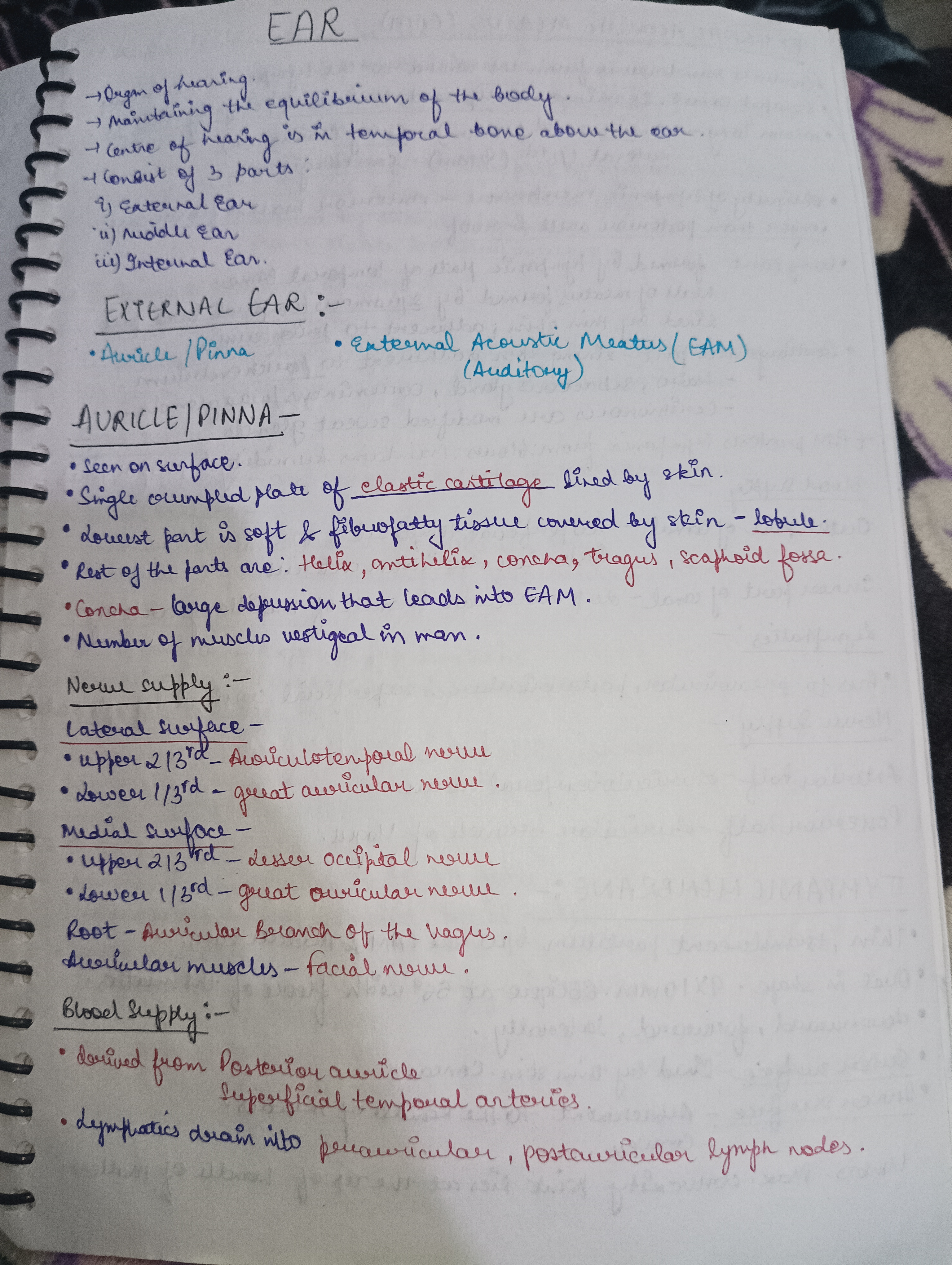What are the components and functions of the ear, including the external ear, its nerve supply, and blood supply?

Understand the Problem
The question is discussing the structure and function of the ear, including its anatomy, nerve supply, and blood supply. It provides details about the external ear's components and features.
Answer
Components: auricle, external acoustic meatus. Nerve supply: auriculotemporal, great auricular, lesser occipital, vagus, facial. Blood supply: posterior auricular, superficial temporal.
The external ear consists of the auricle (pinna) and external acoustic meatus. It receives nerve supply from the auriculotemporal, great auricular, lesser occipital, vagus, and facial nerves. Blood supply comes from the posterior auricular and superficial temporal arteries.
Answer for screen readers
The external ear consists of the auricle (pinna) and external acoustic meatus. It receives nerve supply from the auriculotemporal, great auricular, lesser occipital, vagus, and facial nerves. Blood supply comes from the posterior auricular and superficial temporal arteries.
More Information
The external ear's main function is to collect sound waves and channel them to the tympanic membrane. The auricle aids in sound localization.
Tips
A common mistake is confusing the external acoustic meatus with the middle ear parts. Remember, the external ear ends at the tympanic membrane.
Sources
- The External Ear - Structure - Function - TeachMeAnatomy - teachmeanatomy.info
- Outer ear: Anatomy, blood supply, innervation | Kenhub - kenhub.com
- External Ear - an overview | ScienceDirect Topics - sciencedirect.com
AI-generated content may contain errors. Please verify critical information